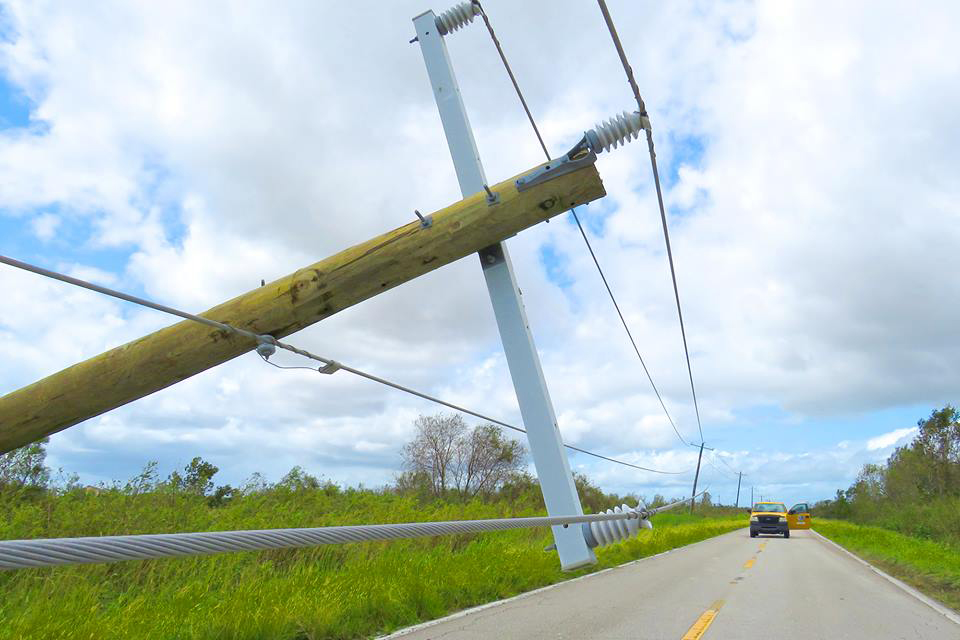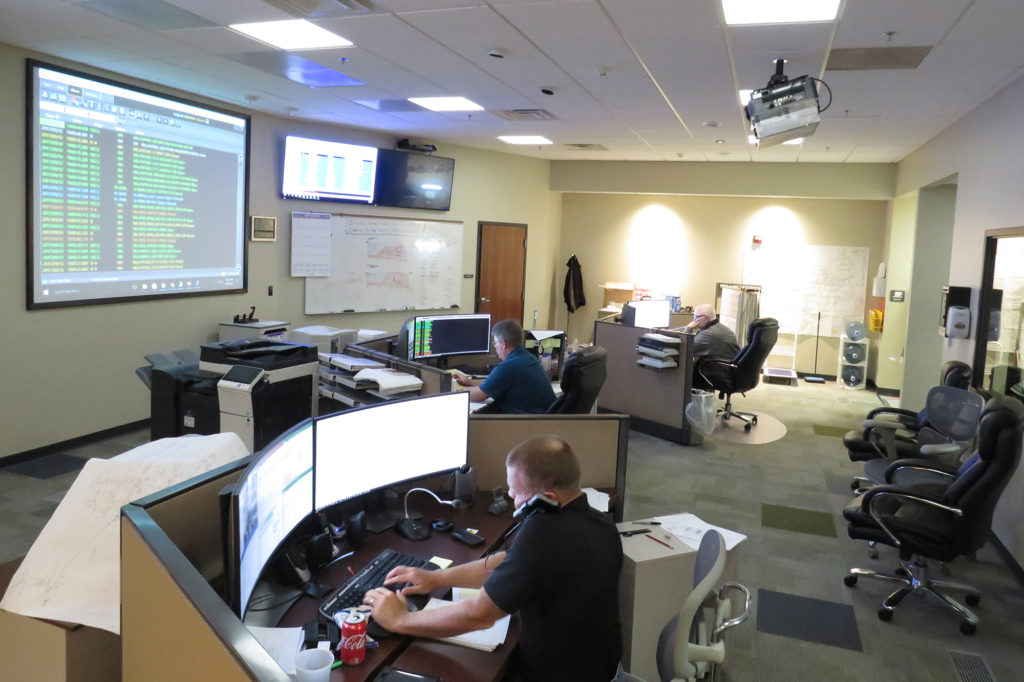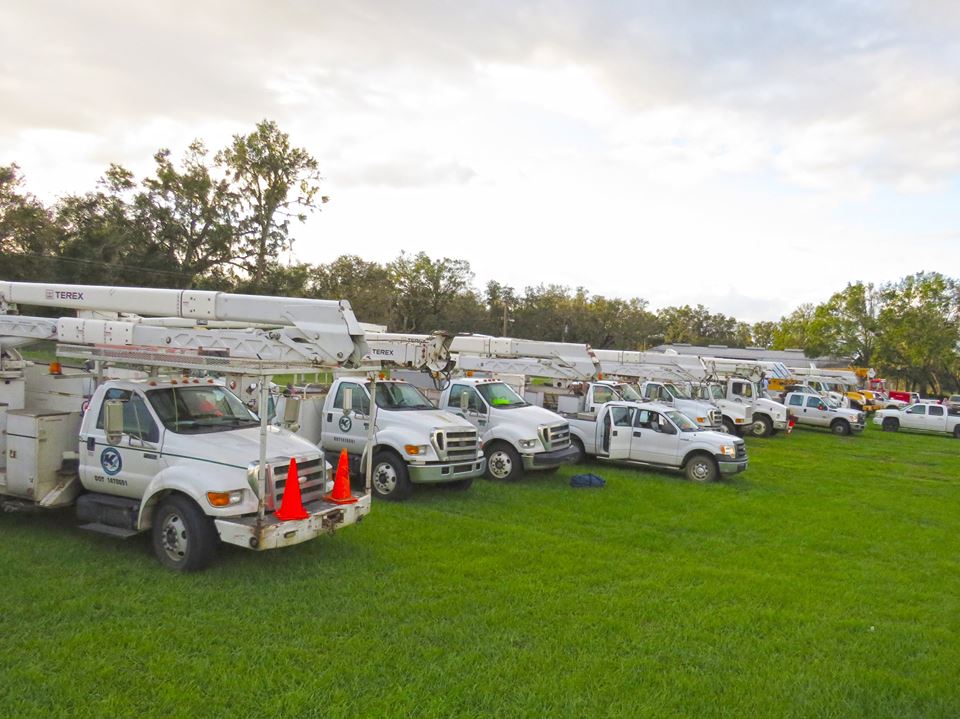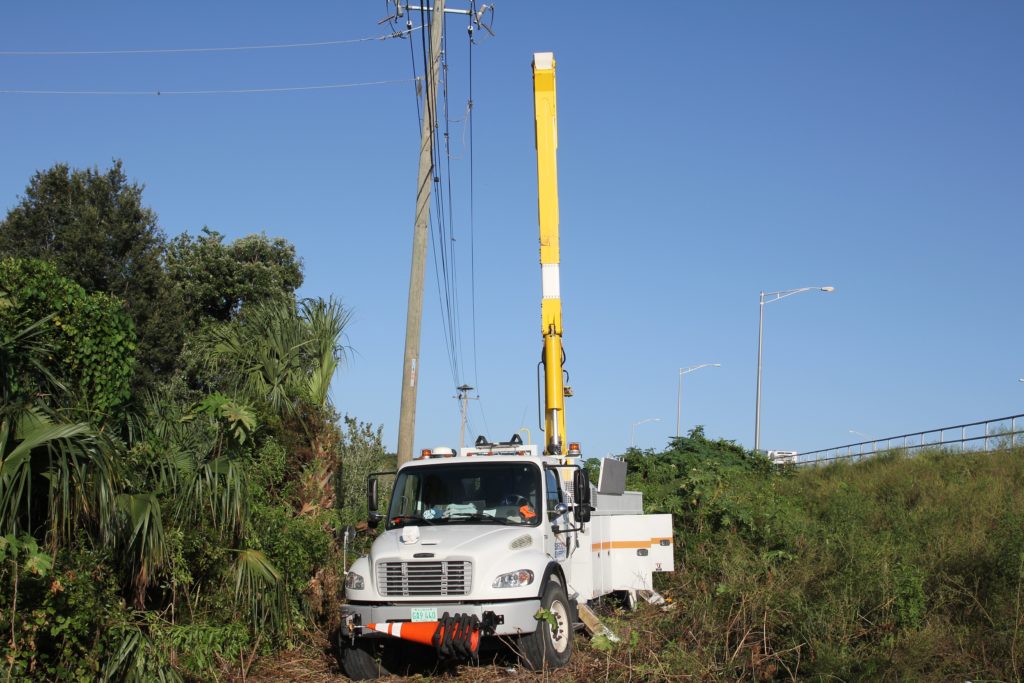
Co-op crews—fortified by mutual aid and contractors—are continuing the task of restoring power to the nearly 1.5 million co-op members left without when Hurricane Irma blew through three states. But in some cases additional issues are compounding problems.
“In five of our 10 counties, there is no electric transmission service,” said Charlotte Heston, vice president of corporate services for Peace River Electric Cooperative in Wauchula, Florida. And she warned some repairs are expected to take weeks to complete.
“The provider serving our eastern division suffered substantial damage to their lines,” said Heston.
Every one of Peace River’s 40,000 meters was offline, and for a time the winds were too strong for crews to work safely, said Heston, who rode out the storm in the co-op’s headquarters, occasionally peeking out from the control room.

“The eye of the storm actually went over our headquarters. The stillness was both terrifying and incredibly cool at the same time,” said Heston. “I was probably more scared than I’ve ever been in my entire life.”
Restoration work continues with the help of mutual aid from Louisiana. Crews are working 16-hour shifts across the co-op’s service territory.
At Madison, Florida-based Tri-County Electric Cooperative, 85 percent of the meters were left without power after Irma.
“Crews are on site and on the way from Texas, Tennessee, Alabama, and Mississippi to assist in the restoration process,” said Kaitlynn Culpepper, community relations specialist. “We will see significant progress made in the coming days.”
That mutual aid is crucial to restoration efforts. Nearly 2,000 co-op employees from 25 states have already arrived or are heading to parts of Florida, Georgia and South Carolina to pitch in on restoration work in the hardest-hit areas.

“People need us, so there’s no reason for us not to be there,” said Wendell Thibodeaux, a journeyman lineman from Jefferson Davis Electric Cooperative, who was heading to Central Florida’s SECO Energy. He was with several crews that left Jennings, Louisiana, Sept. 11 to assist co-ops in Florida.
“It’s good to see people happy when you get their lights back on,” said Thibodeaux.
“We expect to see a lot of downed wires, broken poles and trees all over the place,” said Norm Cormier, another Jefferson Davis EC journeyman lineworker, already comparing Irma’s fury to the destruction left by Hurricane Rita in 2005.
Many of the crews assigned to co-op restoration efforts are committed for up to 10 days. That’s when relayed rotation will kick in to bring fresh co-op personnel into areas still facing major restoration work.

In Georgia, “Tropical-force winds, torrential downpours and the sheer size of Irma resulted in extensive damage to the electric infrastructure,” said Terri Statham, manager of media relations for Georgia EMC. “No area in Georgia was left untouched.”
In neighboring South Carolina, they planned for the worst amid an uncertain storm track.
“Even as the storm was hitting Florida, the potential damage to South Carolina was a moving target,” said Todd Carter, who coordinates in-state and out-of-state support for The Electric Cooperatives of South Carolina.
Carter has been using three computer monitors and two telephones to track his arrangements, and manage shifting requests for assistance.
Meanwhile, if there’s a bright side to Irma, it’s in a place that desperately needs it: Haiti.
Irma skirted the northern edge of the island, but NRECA International said damage was limited to a fallen tree that took down one line. Service was quickly restored. Also, Irma completely avoided the NRECA International-served towns in southwest Haiti which were devastated last year by Hurricane Matthew.
Derrill Holly is a staff writer at NRECA.